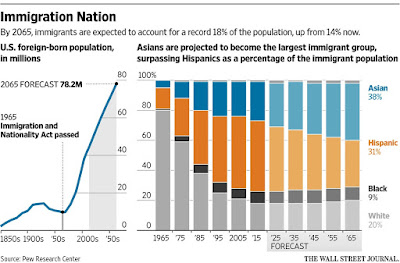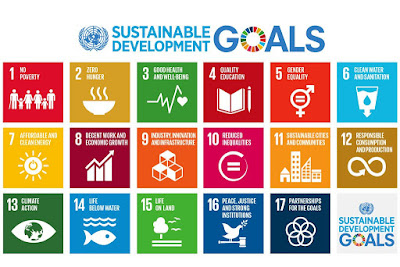The American President's Commitment to Global Development - Building on Over a Half Century of U.S. ProAction
World leaders adopted the 2030 Agenda for Sustainable Development (“2030 Agenda”). This sets out a global development vision and priorities for the next 15 years and should bring about meaningful change and progress, US included. There is pledge to end extreme poverty and prioritizing policies and investments that have long-term, transformative impact and are sustainable. Areas of health, food security, and energy are being generously funded. In the United States, the adoption of the 2030 Agenda coincides with a growing unbiased consensus on the importance of global development, and American philanthropy.MDGs (Millenium Development Goals) have made remarkable gains and that is optimistic for the future. The 2030 Agenda builds on the MDGs, and as the successor framework to the Millennium Development Goals (MDGs), follows the July 2015 adoption of the Addis Ababa Action Agenda (Addis Agenda), a roadmap to help countries identify, attract and access diverse sources of development finance to realize the 2030 Agenda.
Building on the creation of the Millennium Challenge Corporation (MCC) and the President’s Emergency Plan for AIDS Relief (PEPFAR) under President George W. Bush, President Obama released the first U.S. Global Development Policy in 2010. Global development was elevated as a core pillar of American power, and recognized as a strategic, economic, and moral imperative for the United States.
The United States claims it is proactive in exercising global leadership that will be pivotal to achieving the 2030 Agenda in the following areas:
Global health and Global Health Security Agenda
Food security and nutrition
Power Africa
Ending extreme poverty
Gender Equality and the Empowerment of Women and Girls
Climate Change and Resilience
Education
Promoting open government
Catalyzing private investment and other sources of financing
Spurring innovation
Mitigating and responding to conflict and disaster
The US says that it realises that no government or country can deliver on the promise of this ambitious agenda single-handedly. It is incumbent upon all stakeholders to work together in partnership to contribute to a sustained global effort over the next 15 years.
------------
"... It also paves the way for a global agreement on climate change due to be concluded at the 21st Conference of the Parties to the U.N. Framework Convention on Climate Change in Paris in December. ..."
...
"...
Global health and Global Health Security Agenda: ... Obama Administration, U.S. contributions to the Global Fund to Fight AIDS, Tuberculosis and Malaria (Global Fund) have totaled $7.2 billion, ... investments in global health to end the HIV/AIDS epidemic ... AIDS free generation, fight malaria and TB, reduce maternal and child deaths, and strengthen health systems. ... targets for PEPFAR, ... achieve a 25% decrease in HIV incidence among adolescent girls and young women (aged 15-24) within the highest burden geographic areas of 10 sub-Saharan African countries jointly with partners by the end of 2016; and achieve a 40% decrease in HIV incidence among adolescent girls and young women (aged 15-24) within these areas by the end of 2017. ... significant progress in the fight against Ebola in West Africa. ... stay vigilant in our efforts to counter biological threats and to prevent future outbreaks from becoming epidemics. ... commitment to assist at least 30 countries to achieve the targets of the Global Health Security Agenda to build national, regional, and international capability to prevent, detect and respond to infectious disease threats, whether naturally occurring, accidental or intentional. The G-7 Leaders have taken a decision to match this commitment by collectively offering to assist at least 60 countries.
Food security and nutrition: ... 2009 G8 L’Aquila Summit ... address food insecurity, the United States led a campaign that mobilized $22 billion in assistance for agriculture, and today food security and nutrition are at the top of the global agenda ... $10 billion in private sector commitments from more than 200 international and African companies, of which $1.8 billion has already been invested in Africa’s agricultural sector. The number of hungry people in the world – 795 million – has dropped by 100 million over the past decade, ... investing in agricultural development and improved nutrition can have transformative impact in reducing hunger and extreme poverty, ... Feed the Future initiative in 2010, ... Initiative to End Hunger in Africa. ... support inclusive economic growth through development of the agriculture sector. U.S. efforts have resulted in increased yields, higher incomes, improved nutrition and more dynamic economies. Complementing our bilateral efforts, the United States launched together with other donors the Global Agriculture and Food Security Program (GAFSP), ... allocated $1.4 billion to date to 25 low-income countries to help boost agricultural productivity. ... increase food security. With other G-7 countries and African leaders, President Obama launched the New Alliance for Food Security and Nutrition in 2012 to promote sustainability through increased and more responsible private-sector investment in African agriculture.
Power Africa: ... United States committed $7 billion, Power Africa has leveraged nearly $43 billion in external commitments, including more than $31 billion in private-sector commitments alone. ... accelerate private-sector energy transactions, by leveraging the assistance, financing, commercial and diplomatic tools of the U.S. Government, as well as by leveraging the tools and expertise of our bilateral and multilateral partners, including the African Development Bank, the World Bank Group, the Swedish Government, the European Union, and more than 100 private-sector partners. ...
Ending extreme poverty: ... fighting extreme poverty and fostering sustained and inclusive growth, equal access to opportunity and open and fair governance serve one and the same mission. ... USAID released ... new Vision for Ending Extreme Poverty, which sets forth USAID’s definition of extreme poverty, its understanding of what has driven progress, analysis of pertinent trends and challenges, and a strategic framework for USAID’s ongoing commitment to this mission.
Gender Equality and the Empowerment of Women and Girls: Twenty years after the Beijing Declaration and Platform for Action, and the affirmation that “women’s rights are human rights,” women and girls around the world continue to face profound inequalities in every area of life, in every country, and in both public and private spheres. ... promoting gender equality and advancing the rights of women and girls around the world.
Climate Change and Resilience: ... facilitating climate resilient, low emissions economic growth in developing countries, including through the President’s Global Climate Change Initiative. ... climate change poses a systemic risk, ... federal agencies to take climate resilience into account across U.S. international development programs, helping to ensure that our foreign assistance fosters a low-carbon future and promotes sustainable and resilient societies over the coming decades. ... Global Alliance for Climate-Smart Agriculture (GACSA), a multi-stakeholder coalition dedicated to addressing the challenges of promoting food security and supporting agricultural growth in the context of climate change.
Education: ... contributed $127 million to the Global Partnership for Education (GPE), which, along with other donor contributions, has helped put 22.5 million more children in school. ... Michelle Obama announced Let Girls Learn, a new initiative that will build on investments the United States has made and successes achieved in global primary-school education, and expand them to help adolescent girls complete their education and pursue their broader aspirations.
Promoting open government: ... the Open Government Partnership (OGP), a global initiative to increase transparency, bolster citizen engagement, and harness new technologies to improve governance. ... grown from 8 to 66 nations that have made more than 2,000 commitments to improving governance for some 2 billion people worldwide. Today, the United States joined OGP Steering Committee members in signing a declaration on Open Government for the Implementation of the 2030 Agenda for Sustainable Development.
Catalyzing private investment and other sources of financing: ... advancing a new model of development focused on using our development finance tools to mobilize private and other forms of capital for sustainable development and as a lever to spur transformation. ... launch the Addis Tax Initiative, a partnership to help developing countries better mobilize and effectively use their own domestic resources to achieve sustainable development. ... Overseas Private Investment Corporation (OPIC), the U.S. Government’s development finance institution, has supported more than $35 billion in private investment in developing and emerging markets. ... that OPIC has supported since 2002, when the Monterrey Consensus was agreed, are expected to yield close to $82 billion in private investment. ... Millennium Challenge Corporation’s (MCC) $10 billion grant portfolio has leveraged nearly $5 billion in private-sector investment and more than $450 million in partner country contributions.
Spurring innovation: ... promoted new public- and private-sector efforts to harness cutting-edge technologies, including to accelerate research and scale innovations to support sustainable development. USAID’s Global Development Lab is bringing together diverse partners to identify, test and scale innovations to solve development challenges, and accelerate efforts to end extreme poverty. ... USAID launched the Global Innovation Fund in 2014 to boost investments in novel solutions to development challenges. ... launching the Global Partnership on Sustainable Development Data, to accelerate the data revolution that will be essential for achieving and measuring progress on the sustainable development goals.
Mitigating and responding to conflict and disaster: ... human toll of the world’s humanitarian crises reached staggering heights, ... provided $6.5 billion in life-saving food, healthcare, water and shelter this year. ... do more to contribute to UN humanitarian appeals. ... vulnerable communities across the Sahel, the Horn of Africa, and South and Southeast Asia to help them build resilience to crises and conflicts and, eventually, reduce the need for costly emergency interventions. ..."
...
"... incumbent upon all stakeholders – governments, the development community, faith-based organizations, research institutions, the private sector and ordinary citizens – to work together in partnership to contribute to a sustained global effort ... in order to deliver on the promise of this Agenda for our citizens. "
------------
Find this at http://www.whitehouse.gov/the-press-office/2015/09/27/fact-sheet-us-global-development-policy-and-agenda-2030.






